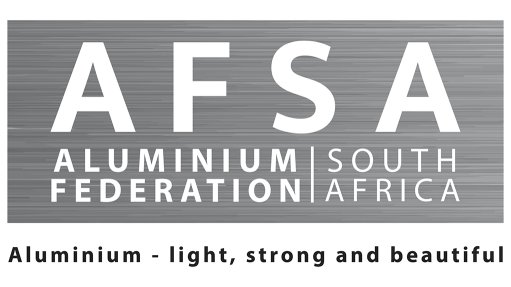CSIR nanotechnology centre: foundations laid, future challenging
A key success of the National Centre for Nanostructured Materials (NCNSM), a joint initiative of the Department of Science and Technology (DST) and the Council for Scientific and Industrial Research (CSIR) has been its role in developing skilled researchers. This was highlighted on Monday by NCNSM director Professor Suprakas Sinha Ray, addressing the centre's tenth anniversary celebration.
"What is the biggest achievement in the past ten years?" he queried. "The biggest success is human capital development. That is making [an] impact on the country."
"The [original] focus [of the NCNSM] was on developing human capital and credibility," agreed CSIR CEO Dr Thulani Dlamini in his address. This, he added, the centre had been most successful in achieving, citing its record of scientific publications (which include 17 cover stories in scientific journals).
DST chief director: innovation priorities and instruments Cristina Pinto echoed this, in her turn. She highlighted that the major focus for the centre during its first decade had been human capital development and infrastructure development. Even so, the centre has produced a number of product prototypes, now under commercialisation.
She noted that the NCNSM was part of a wider DST programme for human capital development in nanoscience and nanotechnology. This wider programme included the country's other national nanotechnology innovation centre, at minerals beneficiation research institution Mintek, Research Chairs at universities, the support of nanotechnology development grants, nanotechnology flagship programmes, an MSc programme in nanoscience, and a nanoschools programme.
With the successful achievement of both human capital and infrastructure development, plans were now in place for a strong focus on responsible development, Pinto reported. Responsible development included a Nano-HSE (health, safety, environmental) Risk Research Platform, a Nano Research and Development (R&D) Code of Conduct, Nanotechnology Standardisation, and a Nano Public Engagement Programme.
For the next ten years, she affirmed that the focus would be on innovation. The NCNSM was now equipped with pilot plants (and the centre at Mintek with clean rooms) and these would be key to innovation. But the R&D effort would be focused on identified niche areas, because of limited resources. Still, "[i]t is envisaged that through the focused innovation intervention, at least two South African developed products will hit the markets by 2025."
"The success of piloting will allow the centre to move beyond the laboratory and produce real products," cited Dlamini. "There is already a lot of interest from the private sector to work with us." He observed that nanotechnology was no longer an emerging technology and the list of its applications was continually growing.
"What next? Science must generate some value," asserted Ray. That value could be scientific, it could be economic, including creating jobs. "I tell my team -- think big! ... Look for big projects ... to solve some of the country's problems." More cooperation and collaboration was required in the sector in South Africa.
"If we want to make an impact ... we have to be very fast," he stressed. "We have to move within three to five years time. ... We have to speed up." Industry did not need perfect materials; it needed materials that worked reliably.
"We need to accelerate our product development effort," agreed Dlamini. "I think the window of opportunity is closing, getting smaller and smaller. The challenge for us is to insure that what we have done up till now can be converted into products."
Article Enquiry
Email Article
Save Article
Feedback
To advertise email advertising@creamermedia.co.za or click here
Comments
Announcements
What's On
Subscribe to improve your user experience...
Option 1 (equivalent of R125 a month):
Receive a weekly copy of Creamer Media's Engineering News & Mining Weekly magazine
(print copy for those in South Africa and e-magazine for those outside of South Africa)
Receive daily email newsletters
Access to full search results
Access archive of magazine back copies
Access to Projects in Progress
Access to ONE Research Report of your choice in PDF format
Option 2 (equivalent of R375 a month):
All benefits from Option 1
PLUS
Access to Creamer Media's Research Channel Africa for ALL Research Reports, in PDF format, on various industrial and mining sectors
including Electricity; Water; Energy Transition; Hydrogen; Roads, Rail and Ports; Coal; Gold; Platinum; Battery Metals; etc.
Already a subscriber?
Forgotten your password?
Receive weekly copy of Creamer Media's Engineering News & Mining Weekly magazine (print copy for those in South Africa and e-magazine for those outside of South Africa)
➕
Recieve daily email newsletters
➕
Access to full search results
➕
Access archive of magazine back copies
➕
Access to Projects in Progress
➕
Access to ONE Research Report of your choice in PDF format
RESEARCH CHANNEL AFRICA
R4500 (equivalent of R375 a month)
SUBSCRIBEAll benefits from Option 1
➕
Access to Creamer Media's Research Channel Africa for ALL Research Reports on various industrial and mining sectors, in PDF format, including on:
Electricity
➕
Water
➕
Energy Transition
➕
Hydrogen
➕
Roads, Rail and Ports
➕
Coal
➕
Gold
➕
Platinum
➕
Battery Metals
➕
etc.
Receive all benefits from Option 1 or Option 2 delivered to numerous people at your company
➕
Multiple User names and Passwords for simultaneous log-ins
➕
Intranet integration access to all in your organisation
















